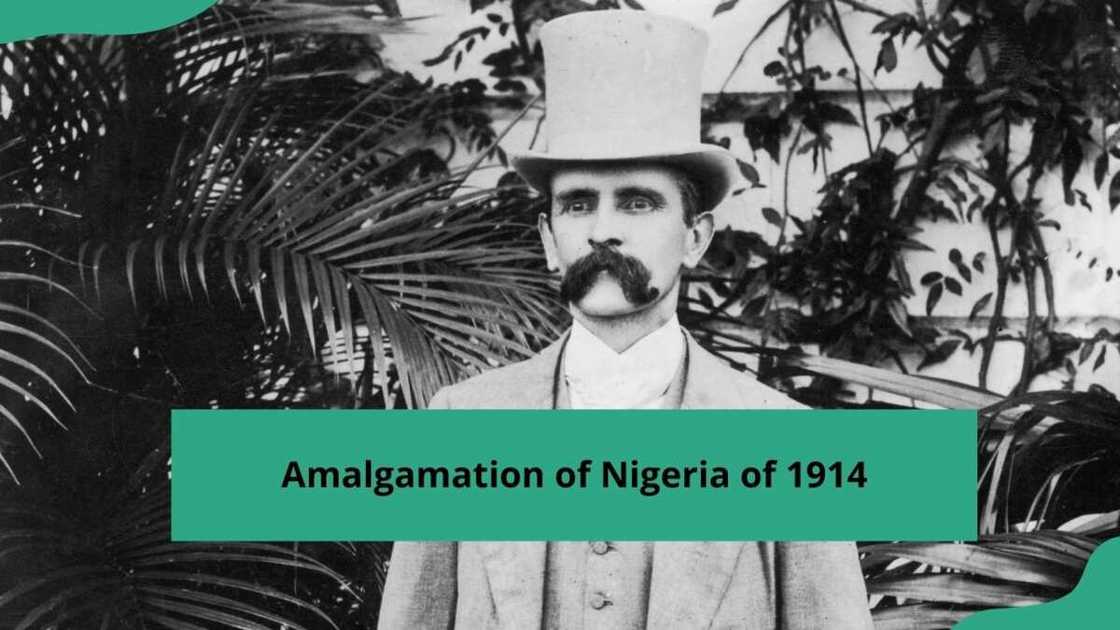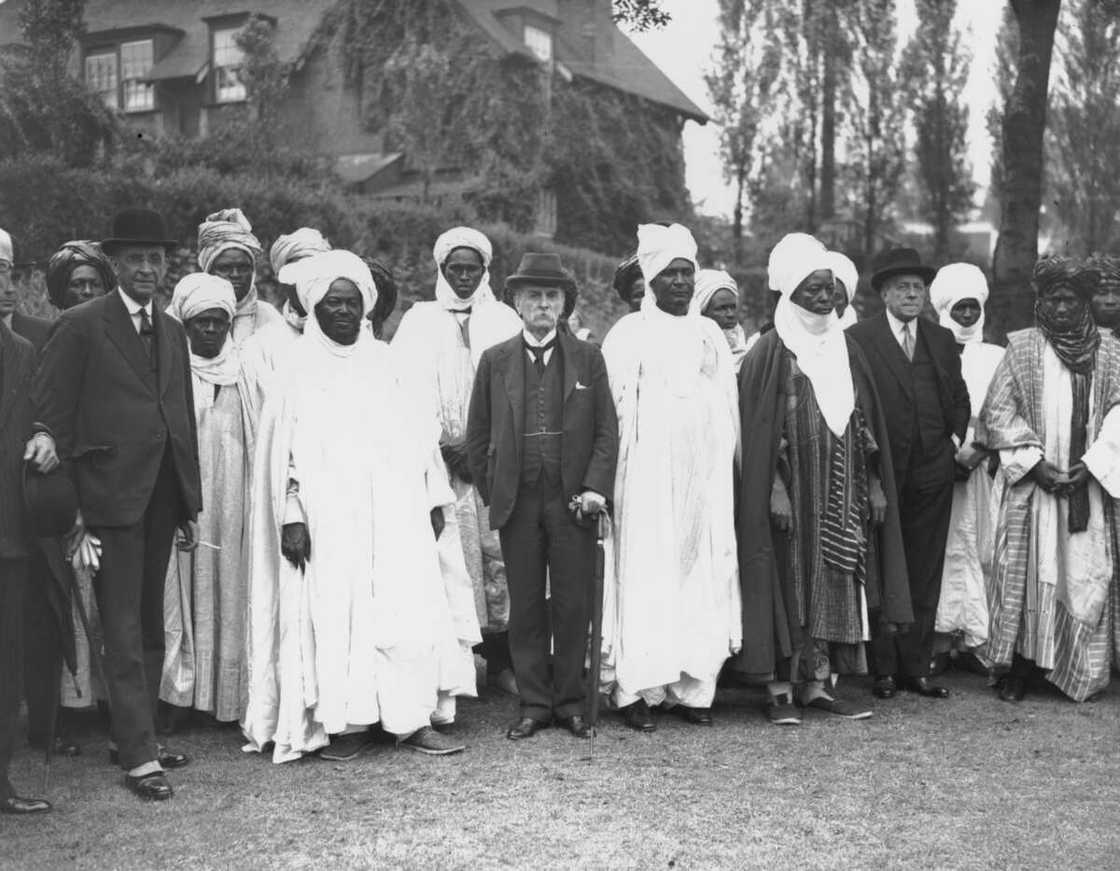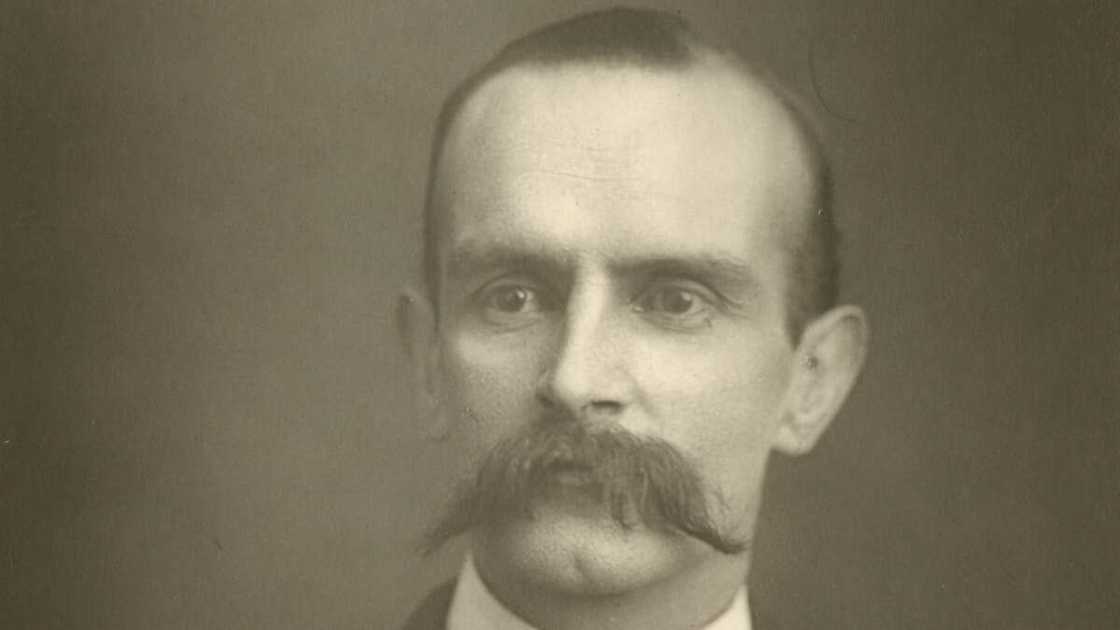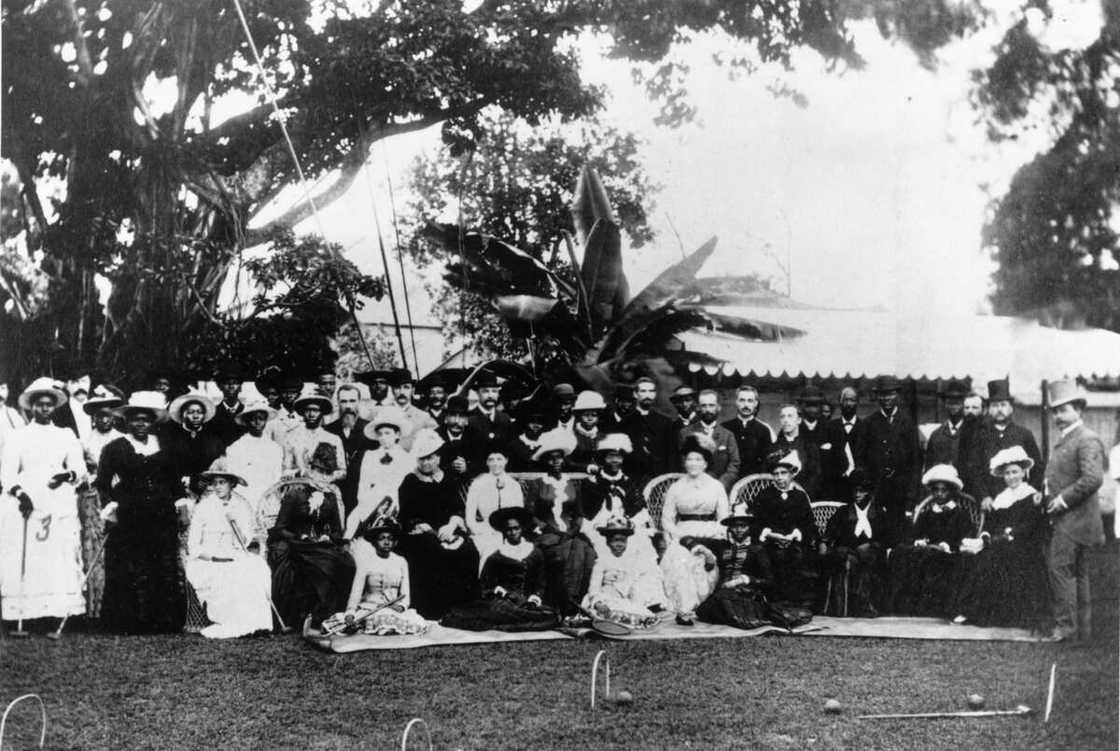Amalgamation of Nigeria of 1914: history, reasons, key personalities
The amalgamation of Nigeria of 1914 refers to the British colonial authorities' political and administrative merger of the Northern and Southern Protectorate of Nigeria. This event significantly impacted the history and development of modern Nigeria.

Source: UGC
Sir Frederick (later Lord) Lugard was to play a fundamental role in the subsequent history of colonial Nigeria. He aimed to merge two parts of a country into a single colony. Despite resistance to this process in Lagos, the rest of the territory did not cause problems. Here is all you need to learn about the history of Nigeria's amalgamation.
Amalgamation of Nigeria of 1914
Before 1914, Nigeria was a region with diverse ethnic groups, languages, and cultures, and it was administered as two separate entities: the Northern Protectorate and the Southern Protectorate. The British colonial government merged these two regions into a single entity for administrative and economic reasons.
Who was Lord Lugard?
Lord Lugard arrived in Northern Nigeria in 1895 from Uganda to the military campaigns of George Goldie authorized Royal Niger Company. He was the man who conquered northern Nigeria militarily. Sokoto, the seat of the caliphate, was the last Northern Territory captured by the British in 1903.
His military campaign in northern Nigeria included his famous march to Borgu and race on Nikki, who formed the basis of Britain's claim to Northern Nigeria. This resulted from his successful military campaign in the North on 1 January 1900.
He was appointed the first British High Commissioner of Northern Nigeria after the district administration of the Royal Niger Company ended, and a British protectorate was formally established there.
About 15 years after the separate and distinct British protectorate was established in Southern Nigeria.

Source: Getty Images
The British plans for Nigeria
Even then, England had no definite plans for the future of its new colony. There was no real debate in the British House of Commons on what to do with their new colony, as there was no real enthusiasm among the leading British politicians to acquire new territories.
The emphasis in the British colonial office was deposited with the barest minimum cost of administering this vast territory. It was a little long-range planning in the UK for the future of their new colony.
In the case of Nigeria, it was left and ruled in three separate pieces, subsequently reduced to two units, North and South Nigeria, and in 1912 under Sir (later Lord) Lugard as the first British governor-general of colonial Nigeria.
The amalgamation of Northern and Southern Nigeria
Before 1914, Nigeria was administered as two separate British colonial territories: the Northern Protectorate and the Southern Protectorate. These two regions were distinct regarding culture, religion, governance, and economic activities.
The Northern Protectorate was predominantly Muslim and had a system of indirect rule, with traditional emirs as local leaders.
The Southern Protectorate was more ethnically diverse, mixing Christian, indigenous religious, and Muslim communities. The British employed a system of direct rule, with British officials more involved in governance.
The amalgamation of Northern and Southern Nigeria officially took effect on 1 January 1914, when the two provinces were merged into a single entity known as the Colony and Protectorate of Nigeria.
Lord Frederick Lugard, a British colonial administrator, played a key role in implementing the amalgamation. He was appointed the Governor-General of the newly merged entity.

Source: Getty Images
5 reasons for the amalgamation of Nigeria
The main reasons for amalgamation included:
- Improve economic efficiency: The British believed that a single administration would be more cost-effective and efficient in managing Nigeria's resources and infrastructure. This was particularly important in light of the economic interests of the British Empire.
- Control politics in the country: Amalgamation allowed the British colonial government to exert greater control over the entire territory of Nigeria, as they faced various resistance movements and conflicts in both the northern and southern regions. A unified administration made it easier to govern and maintain order.
- Encouraging trade: The British hoped to promote economic development and trade within Nigeria by merging the regions. They believed a single, unified market would be more attractive to foreign investors and stimulate economic growth.
- Streamlining the administration: A single colonial administration could standardize laws, regulations, and policies across the entire territory, making governance more consistent and uniform.
- Economic equity: The British believed that amalgamation would promote economic development by creating a larger and more attractive market.
Effect of amalgamation in Nigeria
Nigeria became a country with many different ethnic groups, each having its languages and traditions.
- It created a divide between the mostly Muslim North and the diverse and Christian South, causing regional tensions.
- The colonial administrative structure stayed after independence, influencing how the country was governed.
- Economic disparities grew, with the North being less developed compared to the South.
- Politics in Nigeria got more complex, often involving regional and ethnic interests, leading to instability and military rule.
- People strongly identify with their ethnic, religious, or regional backgrounds, sometimes leading to conflicts based on identity.

Source: Getty Images
Who were the key personalities in the amalgamation of Nigeria?
Some key figures involved in the amalgamation process included Lord Frederick Lugard, Antrobus, Fiddes and Strachey.
What was the main reason for the amalgamation of Nigeria?
The main reason for the amalgamation of Nigeria was to make governing the region more efficient and economically beneficial for the British colonial authorities.
Was there an amalgamation of Nigeria's attempt in 1906?
In 1906, Lagos and Southern Nigeria were merged to form the Colony and Protectorate of Southern Nigeria.
Who gave Nigeria her name after the 1914 amalgamation?
Nigeria was not given its name after the 1914 amalgamation. The name "Nigeria" was suggested by Lady Flora Shaw, a British journalist and later the wife of Lord Frederick Lugard. She named the country Nigeria after the Niger River on 8 January 1897.
The amalgamation of Nigeria was officially implemented on 1 January 1914. This marked the beginning of a unified Nigeria under British colonial rule.
Legit.ng recently published an article about the Nigeria Civil Defence. This is one of the many paramilitary, military, and police organizations operating in Nigeria. These institutions play diverse roles, all tied to the maintenance of safety, law enforcement, and order in the country.
Often referred to as NSCDC, this federal security agency was established with the primary objective of addressing potential threats and protecting Nigeria and its citizens from various forms of attacks.
Source: Legit.ng

Jackline Wangare (Lifestyle writer) Jackline Simwa is a content writer at Legit.ng, where she has worked since mid-2021. She tackles diverse topics, including finance, entertainment, sports, and lifestyle. Previously, she worked at The Campanile by Kenyatta University. She has more than five years in writing. Jackline graduated with a Bachelor’s degree in Economics (2019) and a Diploma in Marketing (2015) from Kenyatta University. In 2023, Jackline finished the AFP course on Digital Investigation Techniques and Google News Initiative course in 2024. Email: simwajackie2022@gmail.com.

Adrianna Simwa (Lifestyle writer) Adrianna Simwa is a content writer at Legit.ng where she has worked since mid-2022. She has written for many periodicals on a variety of subjects, including news, celebrities, and lifestyle, for more than three years. She has worked for The Hoth, The Standard Group and Triple P Media. Adrianna graduated from Nairobi University with a Bachelor of Fine Arts (BFA) in 2020. In 2023, Simwa finished the AFP course on Digital Investigation Techniques. You can reach her through her email: adriannasimwa@gmail.com





